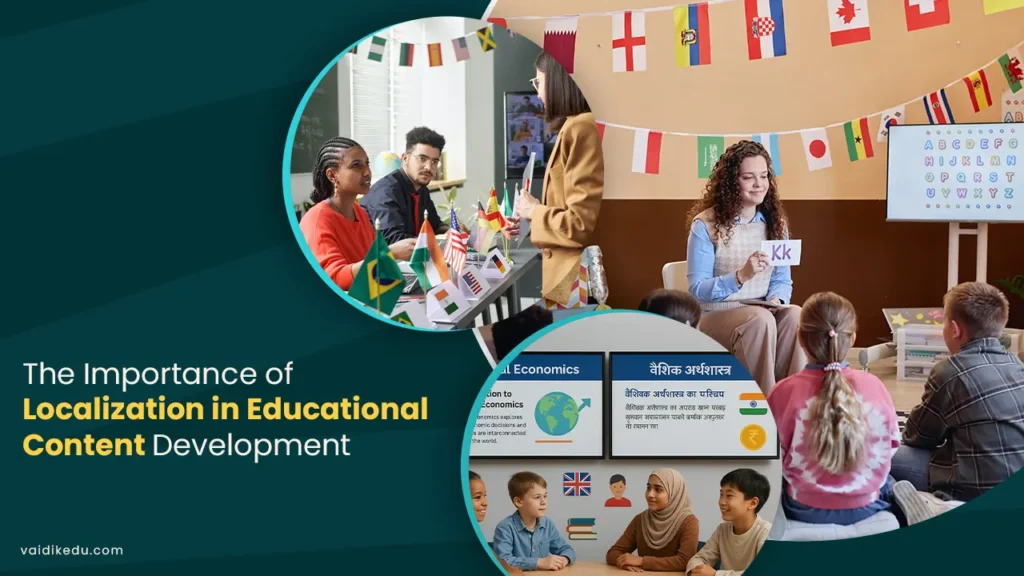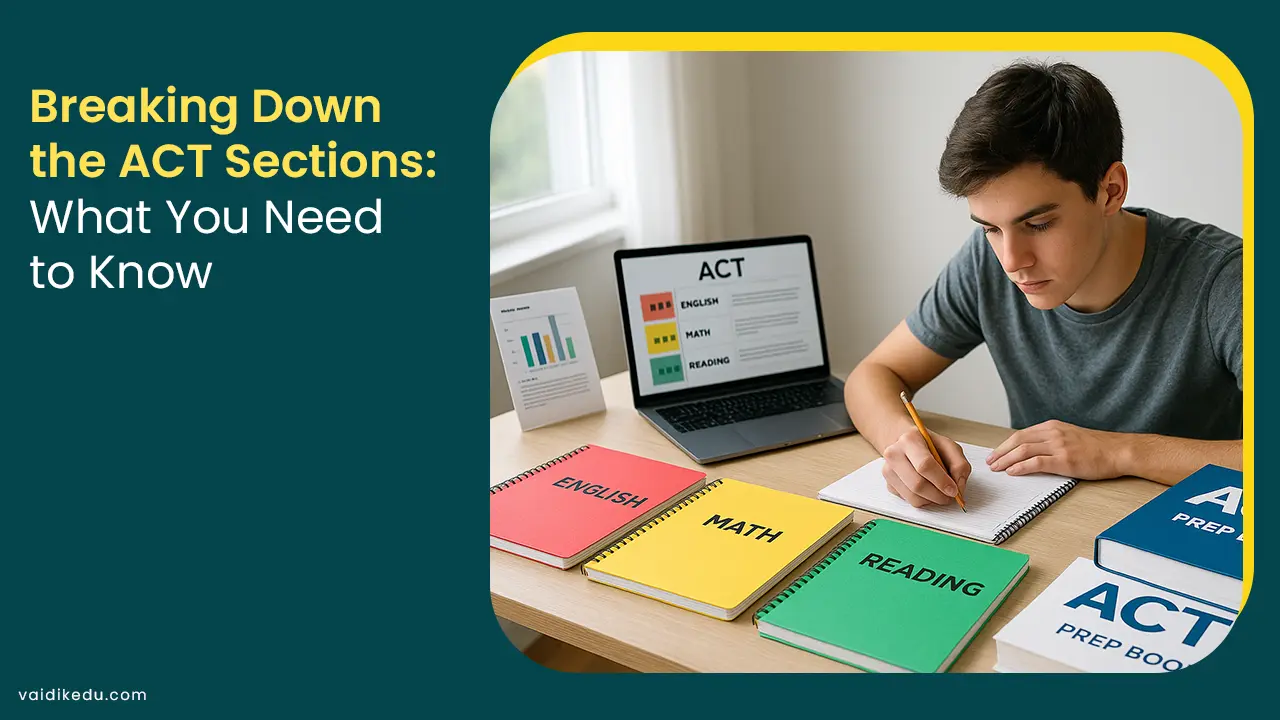Education is no longer limited by geographical boundaries in an increasingly interconnected world. Learners around the globe are accessing educational content, and hence, it becomes imperative to tailor the content to the cultural, linguistic, and regional context of the target audience. Localization is where the need lies.
Localization involves more than simple translation. This is because educational content must strike the chord of a local culture, language, and learning preference. In this blog, we delve into the meaning of localization for educational content, its effects, and why localization is so crucial for the future of education.
What is Localization
Localization refers to the adaptation process of content in this case, text, images, videos, or even more interactive elements such that they meet the demands and needs of a particular market or locale.
Regarding educational content Development , localization means much more than translating a textbook or e-learning course from one language into another. It encompasses changing cultural references, adjusting content to meet local educational standards, and ensuring the tone, visuals, and examples align with the values, norms, and expectations of the target audience.
For example, an online learning course intended to be delivered in the United States may require that it be entirely overhauled before being utilized by learners residing in India. The content differences will depend largely on culture and learning styles across regions and must be reflected even in the preferred language of its delivery.
Why is Localization Important in Education
- Cultural Relevance
One of the most important reasons to localize educational content is to make sure the content is relevant culturally. Each region has its customs, values, and traditions. What works for one group will not work for another.
If the content is not localized, then the learners might seem disconnected from the material, and disengagement would take place. For instance, a topic on global geography might use local examples for which the intended audience can resonate, ensuring that the material feels familiar.
- Improved Learning Experience
Localization ensures an environment is provided for learners whereby they easily digest information received, simply because it happens to be delivered in a way that they understand or identify with.
This ranges from language and cultural contexts to examples used in the content. There is nothing as effective in helping learners grasp things as an example that is derived from their culture. It fosters deeper engagement and retention of knowledge.
- Expanding Access And Reaching More Learners
Increasingly, educational institutions, online platforms, and businesses target a global audience. For effectively reaching the diversified learner base, localizing content becomes imperative. A highly used online course in English will exclude millions of non-English speakers.
The translation and localization of the content into various languages would help educational institutions to expand their reach towards a global audience and allow learners with different linguistic backgrounds to learn in their native language.
- Complying with Local Regulations And Standards
Each country has its educational standards and requirements. In certain regions, particular subjects or topics have to be included in the material being taught.
Localization ensures that content is appropriate to local regulations, academic requirements, certifications, and professional standards. Thus, educational content is not only more accessible but also legal and academically appropriate for the region.
The Impacts of Localization in Educational Content
- Enhanced Student Engagement
When the content speaks directly to the learner in his or her language and cultural context, learners are more likely to be active. The use of local idioms, examples, and references creates a sense of connection, making students feel that the content is designed for them. This usually leads to better learning outcomes and satisfaction.
- Better Accessibility And Inclusivity
Localization is therefore one of the factors that supports the idea of inclusivity in education. Institutions localize their content for different linguistic backgrounds among the students hence reducing barriers that limit education among many. Accessibility to materials improves, especially where otherwise, materials might be alien in a foreign language or format.
- Global Collaboration Opportunities
Localizing educational content opens up opportunities for collaboration across borders. By creating materials that are accessible to international audiences, educational institutions can partner with global organizations, share knowledge, and create networks of learners worldwide.
This, in turn, can help students develop a more global perspective, broadening their horizons beyond their local context.
- Improved Learning Outcomes
Localized content would better meet the different learning preferences and regional learning styles. For example, some cultures are visual or very experiential, while some are more theoretical.
Localizing the teaching methods means the developers can ensure that all their students’ learning needs are addressed so that they understand and remember the information given, resulting in better learning outcomes overall.
Challenges in Localization
Despite its benefits, localization in educational content development does come with challenges. These include:
- This would take time and resources and would be heavy in work, especially for specialized or very technical content. Localization also calls for coordination among the translator and subject matter expert to get things right culturally.
- Technology Barrier. The localization might also face the issue of technological inadequacies in certain areas to reach out to high-quality educational material.
- Balancing Global And Local Needs: Content developers should strike a balance between universal education standards and localized contexts for their content. Achieving such a balance can be a difficult challenge, particularly when trying to make such programs of global education universally applicable to diverse regions.
Conclusion
Localization is no longer an option but a necessity in developing educational content. It helps cross the barriers of language and culture, thus facilitating better learning, higher effectiveness, and more interest on the part of students from various parts of the world.
Therefore, as globalization advances, localization becomes ever more important for education. Through the embracement of such a process, educational bodies, content writers, and websites would ensure their diverse learners could find equal space for success throughout the learning experiences.
Localization of learning content will bring education that is more sensitive to the local market’s needs and preferences to ensure an inclusively equitable world. The future of education resides in its ability to adapt, connect, and engage learners from the world’s remotest corners. Localization is part of this key feature.
Frequently Asked Questions
Localization of educational content ensures that it reaches the learners from different cultural backgrounds. It makes the content more engaging, accessible, and relatable, which can improve learning outcomes. Localization also helps educational materials comply with local regulations and meet the specific educational standards of different regions.
No, localization is more than just a translation exercise. It can adapt content to suit a local culture, customs, and learning styles; for instance, “adapting images, changing examples, changing presentation formats, and making sure the content obeys local educational standards,” among others.
Localization is very important in making global education accessible. Institutional expansion across borders creates an opportunity for international collaboration, knowledge sharing, and a more inclusive learning experience. Educational providers can create materials relevant and engaging for students everywhere by localizing content.
Accessibility is greatly improved, yes, since localization involves preparing educational material concerning a variety of linguistic and cultural backgrounds, such that students who may otherwise fail due to their struggle with language, which happens not to be the students’ first, can use it in the familiar language and culture.









